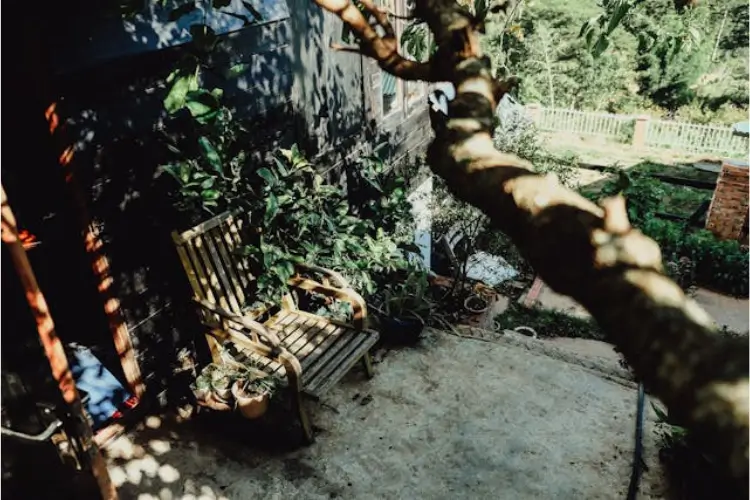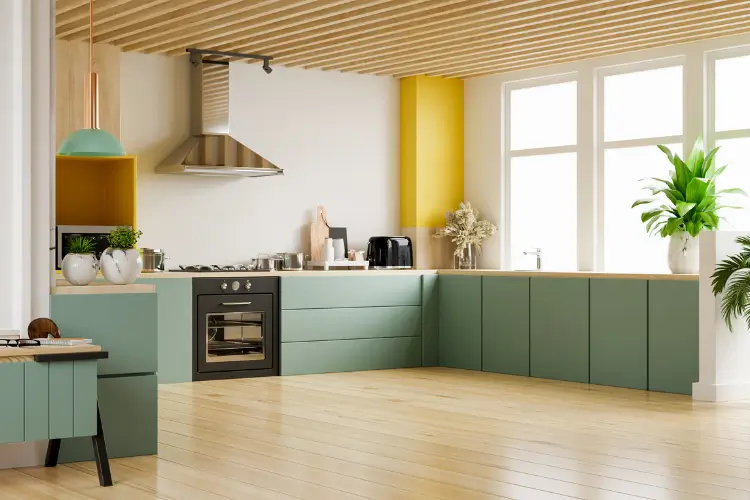A garden can look settled at first glance, yet many small decisions could still shift how it works and how it feels during regular use, and these adjustments might not require large budgets or complex tools. You could scan ordinary details, such as paths, borders, seating, or storage, then match each detail with a simple action that supports function. Results usually depend on space, climate, and time, so a careful but flexible approach could be useful.
Re-map paths so routes feel obvious
Clarifying where feet actually go can make the whole area easier to navigate, since movement patterns often form on their own while maintenance habits follow later. Paths may be kept wide enough for tools, while edges could be kept plain so sweeping is simple and puddling is limited. Materials might stay consistent to keep the look unforced, and spacing can remain regular so sections do not feel crowded. If turning points get messy, small markers or low edging might guide steps without making the layout complicated. Where surfaces loosen after rain, compacting and topping up could maintain firmness. Even a minor shift in route direction might reduce wear on beds, and it could also protect soil structure by keeping feet off soft zones during wet periods.
Layer plants to avoid flat sections
Plants arranged at mixed heights can make areas feel more intentional, since a single level often reads as plain and might hide useful variety that already exists. Taller items could stand toward the back of a view, while midlevel plants can meet them and shorter types can settle along the front, and this pattern may be repeated in more than one spot. Containers might raise small species where roots need warmth or drainage, and frames or stakes could support climbers while also adding shape. Spacing that allows air movement usually reduces minor issues and keeps leaves cleaner after watering. Choosing a few repeating forms, rather than many unrelated ones, can help the eye read structure. Over time, you might trim lightly so volumes stay balanced and sightlines remain practical for daily checks. Equally important is paying attention to soil health, as it forms the foundation of every thriving plant arrangement. Healthy soil improves drainage, root development, and overall plant resilience. Incorporating organic matter, such as compost or well-rotted manure, helps maintain moisture balance and enriches the ground with essential nutrients. Using the right fertilizers or high-quality nutrient solutions such as those offered by Athena Nutrients, ensures plants receive consistent nourishment throughout the growing season. When soil is nurtured properly, the entire setup becomes more harmonious, with plants growing fuller, stronger, and more visually cohesive over time.
Mark borders that guide use
Boundaries placed with intention can help different tasks stay separate, and they often make quick work of decisions about what belongs where, which reduces confusion during routine care. Lines may be straight in tight spaces or gently curved in larger ones, while heights could remain modest so views are not blocked. For example, a faux hedge separates sitting areas from flower beds and keeps visual spill contained without ongoing trimming. Low timber, pavers, or metal strips might hold mulch in place and could also stop soil from washing into paths. When children or pets share the area, rounded edges often avoid snags while still signalling limits. Corners can be softened with compact shrubs or tidy grasses, so turning a wheelbarrow stays simple. The overall effect usually supports order without feeling strict.
Spread seating between fixed and flexible
Seating that mixes permanent and portable options can adapt to changing weather and group sizes, while still keeping a stable core that defines the social spot. A fixed bench might set the anchor near a wall or view, and lighter chairs could move with the sun or shade as the day changes. Surfaces that clean easily are practical where dust settles, and materials that dry quickly often reduce downtime after light rain. Small tables can be grouped when guests arrive and then stored when space is needed for tasks. Positioning seats near paths, but not inside them, usually lessens traffic through beds. If wind is a factor, low backs and heavier bases may stay steadier, and a compact rug underfoot could make the area feel complete without adding complexity.
Hide clutter with simple stow points
Storage that stays unobtrusive can keep tools reachable while keeping the scene tidy, and the solution might be as small as a weather-resistant box or a narrow cabinet that sits against a fence. Hooks can hold hand tools upright so edges stay sharp and dry, and shallow shelves may contain pots or gloves where air can circulate. When hose runs look messy, a reel might shorten the distance and stop kinks that waste time. Labels can be plain and readable, so items return to the same spot after use, and bins with lids usually discourage pests. If compost is kept on site, placing it away from seating but near beds often shortens the carrying distance. The intent is simple order, since clear storage reduces delays and supports consistent habits across the season.
Light key spots for low-glare nights
Lighting chosen for gentle illumination can extend use after sunset, yet the goal might be to guide rather than to flood, because bright beams can flatten shapes and invite glare. Low path lights could mark steps, while a few upward accents might show a tree or wall without slicing into sightlines. Rechargeable or solar lights are useful where wiring is not available, and timers help prevent them from staying on too long. If motion sensors are added, adjust the sensitivity so small animals do not cause frequent activations. Warm color temperatures often feel calmer near seating, while neutral tones can help with tasks beside the shed or potting area. Spacing that avoids sharp overlaps usually reads cleaner, and fixtures that shield the bulb can keep the garden comfortable for the eyes.
Conclusion
Small, steady adjustments can move a garden toward clarity and simple function, since routes, edges, furniture, storage, and light all influence how the place works over time. You could choose one focus at a time, match it with an uncomplicated step, and then watch how daily use responds. The general recommendation is to keep changes modest, observe results, and repeat the helpful parts while leaving out what adds effort without real benefit.




